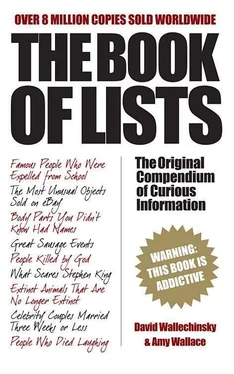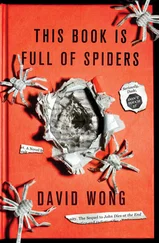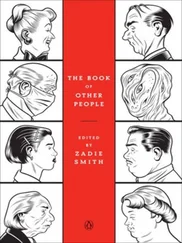ANGOLA MERCENARY FORCE
In 1975, after years of bloody fighting and civil unrest in Angola, Portugal resolved to relinquish its hold on the last of its African colonies. The transition was to take place on November 11, with control of the country going to whichever political faction controlled the capital city of Luanda on that date. In the months preceding the change, three groups vied for power: the Popular Movement for the Liberation of Angola (MPLA), the National Front for the Liberation of Angola (FNLA) and the National Union for the Total Independence of Angola (UNITA). By July 1975 the Marxist MPLA had ousted the moderate FNLA and UNITA from Luanda, so the CIA decided to intervene covertly. Over $30 million was spent on the Angolan operation, the bulk of the money going to buy arms and pay French and South African mercenaries, who aided the FNLA and UNITA in their fight. Despite overwhelming evidence to the contrary, US officials categorically denied any involvement in the Angolan conflict. In the end, it was a fruitless military adventure, for the MPLA assumed power and controls Angola to this day.
AFGHAN MUJAHEDIN
Covert support for the groups fighting against the Soviet invasion of Afghanistan began under President Jimmy Carter in 1979, and was stepped up during the administration of Ronald Reagan. The operation succeeded in its initial goal, as the Soviets were forced to begin withdrawing their forces in 1987. Unfortunately, once the Soviets left, the US essentially ignored Afghanistan as it collapsed into a five-year civil war followed by the rise of the ultra-fundamentalist Taliban. The Taliban provided a haven for Osama bin Laden and al-Qaeda, the perpetrators of the 9/11 terrorist attacks in 2001.
SALVADORAN DEATH SQUADS
As far back as 1964 the CIA helped form ORDEN and ANSESAL, two paramilitary intelligence networks that developed into the Salvadoran death squads. The CIA trained ORDEN leaders in the use of automatic weapons and surveillance techniques, and placed several leaders on the CIA payroll. The CIA also provided detailed intelligence on Salvadoran individuals later murdered by the death squads. During the civil war in El Salvador from 1980 to 1992, the death squads were responsible for 40,000 killings. Even after a public outcry forced President Reagan to denounce the death squads in 1984, CIA support continued.
NICARAGUAN CONTRAS
On November 23, 1981, President Ronald Reagan signed a top secret National Security Directive authorising the CIA to spend $19 million to recruit and support the Contras, opponents of Nicaragua’s Sandinista government. In supporting the Contras, the CIA carried out several acts of sabotage without the Congressional intelligence committees giving consent — or even being informed beforehand. In response, Congress passed the Boland Amendment, prohibiting the CIA from providing aid to the Contras. Attempts to find alternate sources of funds led to the Iran-Contra scandal. It may also have led the CIA and the Contras to become actively involved in drug smuggling. In 1988 the Senate Subcommittee on Narcotics, Terrorism, and International Operations concluded that individuals in the Contra movement engaged in drug trafficking; that known drug traffickers provided assistance to the Contras; and that ‘there are some serious questions as to whether or not US officials involved in Central America failed to address the drug issue for fear of jeopardizing the war effort against Nicaragua’.
HAITIAN COUPS
In 1988 the CIA attempted to intervene in Haiti’s elections with a ‘covert action program’ to undermine the campaign of the eventual winner, Jean-Bertrand Aristide. Three years later, Aristide was overthrown in a bloody coup that killed more than 4,000 civilians. Many of the leaders of the coup had been on the CIA payroll since the mid-1980s. For example, Emmanuel ‘Toto’ Constant, the head of FRAPH, a brutal gang of thugs known for murder, torture and beatings, admitted to being a paid agent of the CIA. Similarly, the CIA-created Haitian National Intelligence Service (NIS), supposedly created to combat drugs, functioned during the coup as a ‘political intimidation and assassination squad.’ In 1994 an American force of 20,000 was sent to Haiti to allow Aristide to return. Ironically, even after this, the CIA continued working with FRAPH and the NIS. In 2004 Aristide was overthrown once again, with Aristide claiming that US forces had kidnapped him.
VENEZUELAN COUP ATTEMPT
On April 11, 2002 Venezuelan military leaders attempted to overthrow the country’s democratically-elected left-wing president, Hugo Chavez. The coup collapsed after two days, as hundreds of thousands of people took to the streets and as units of the military joined with the protestors. The administration of George W. Bush was the only democracy in the western hemisphere not to condemn the coup attempt. According to intelligence analyst Wayne Madsen, the CIA had actively organised the coup: ‘The CIA provided Special Operations Group personnel, headed by a lieutenant colonel on loan from the US Special Operations Command at Fort Bragg, North Carolina, to help organise the coup against Chavez.’
– R.J.F. & C.F.

Courtesy of and © the Icelandic Phallological Museum ( www.ismennt.is/not/phallus/ens.htm )
BLUE WHALE EXHIBIT AT THE ICELANDIC PHALLOLOGICAL MUSEUM
11 MUSEUMS OF LIMITED APPEAL
THE MUSEUM OF BAD ART
(580 High St, Dedham, MA, USA; www.glyphs.com/moba/)
Founded in 1993, MOBA is located in the basement of the Dedham Community Theater eight miles south of Boston. Its motto is ‘Art too bad to be ignored’. Although the bulk of the collection has been acquired at thrift shops, many of the finest pieces were fished out of rubbish bins.
STRIPTEASE MUSEUM
(29053 Wild Road, Helendale, CA, USA; www.exoticworldusa.org/)
Officially titled Exotic World Burlesque Hall of Fame and Museum, it is the domain of former exotic dancer Dixie Evans, whose speciality was imitating Marilyn Monroe. Items on display include breakaway sequinned gowns, tasselled panties, and Gypsy Rose Lee’s black velvet shoulder cape.
THE MÜTTER MUSEUM
(College of Physicians of Philadelphia, 19 South 22nd St, Philadelphia, PA, USA; www.collphyphil.org/muttpg1.shtml)
This stunning collection of medical oddities and instruments includes the Chevalier Jackson collection of foreign bodies removed from the lungs and bronchi, the Sappey collection of mercury-filled lymphaticus, the B.C. Hirot pelvis collection and medical tools from Pompeii. Individual items include Florence Nightingale’s sewing kit; the joined liver of Chang and Eng, the original Siamese twins; bladder stones removed from US Chief Justice John Marshall; a piece of John Wilkes Booth’s thorax; a wax model of a six-inch horn projecting from a woman’s forehead; a cheek retractor used in a secret operation on President Grover Cleveland, as well as the cancerous tumour that was removed from his left upper jaw.
THE DOG COLLAR MUSEUM
(Leeds Castle, Maidstone, Kent, ME17 1PL, United Kingdom; http://www.leedscastle.com/content/visiting_the_castle/dog_collar_museum/.html)
Housed in the Gate Tower of Leeds Castle, the museum features medieval and ornamental dog collars spanning four centuries. Included are numerous spiked collars designed for dogs used in hunting and bull-and bear-baiting.
Читать дальше













